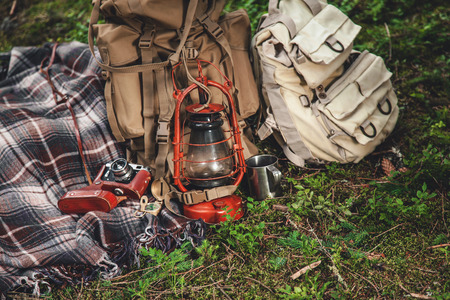Introduction to Indian Headlamps
India’s landscapes are as varied as its cultures, from the snow-capped Himalayan hills to the sun-baked Deccan badlands. With more people embracing trekking, biking, and eco-conscious travel, the demand for reliable headlamps is steadily rising across Bharat. Whether you’re a seasoned trekker in Uttarakhand or an adventure biker cruising through Maharashtra’s rugged terrains, choosing the right headlamp isn’t just about brightness—it’s about safety, sustainability, and adapting to unpredictable conditions. For desi explorers, features like long battery life, sturdy build quality, and weather resistance matter more than ever. As outdoor activities gain popularity among young Indians seeking minimalism and mindful travel, modern headlamps with smart features have become essential gear for every journey. This article explores why having a dependable Indian headlamp is crucial for adventures in India’s diverse terrain.
Essential Features for Indian Adventures
When exploring India’s diverse landscapes—from the misty hills of Himachal to the arid badlands of Rajasthan—choosing the right headlamp can make or break your adventure. Here are the most crucial features you should consider to ensure your journey is both safe and enjoyable.
Dust and Monsoon Resistance
Indian terrain can be unforgiving, with swirling dust in the dry zones and relentless rain during monsoons. A robust headlamp with an IP65 or higher rating will protect against dust particles and heavy downpours, keeping your vision clear whether you’re trekking through Lonavala’s muddy trails or camping by the Chambal riverbanks.
Long Battery Life for Remote Treks
Remote regions like Spiti Valley or the Western Ghats often have limited access to electricity. Opt for headlamps that offer at least 8-12 hours of continuous brightness on a single charge. Some advanced models even provide power-saving modes and battery indicators to help you plan longer expeditions without worry.
Compatibility with Local Charging Options
Charging facilities can be unpredictable in rural and wild areas. Look for headlamps that support versatile charging methods—like USB Type-C, micro USB, or even solar charging. This flexibility ensures you can recharge your device using mobile power banks, local sockets, or solar panels commonly found in Indian markets.
Feature Comparison Table
| Feature | Why It Matters in India | Recommended Specification |
|---|---|---|
| Dust/Water Resistance | Keeps lamp functional during sandstorms & monsoons | IP65/IP67 or higher |
| Battery Life | Supports long treks without easy access to power | 8-12+ hours on medium/high setting |
| Charging Options | Adapts to Indian plug types & off-grid solutions | USB Type-C/Micro USB/Solar Charging |
Pro Tip:
If you’re planning a Himalayan trek or a desert camping trip, always carry a backup battery or portable solar charger for extra peace of mind. With these essential features, your headlamp will become a reliable companion wherever your Indian adventure takes you.
![]()
3. Top Headlamp Picks for Indian Terrains
India’s diverse landscapes—from the rocky hills of Himachal to the wild scrublands of the Deccan—demand headlamps that blend reliability, durability, and local adaptability. Here are some of the most trusted headlamps, celebrated by Indian trekkers, eco-campers, and outdoor explorers.
Petzl Tikka: A Trekker’s Favourite
The Petzl Tikka has earned a loyal following in India’s trekking communities, especially among those venturing into the Western Ghats or the Himalayas. Users appreciate its lightweight design and long battery life, perfect for multi-day hikes. Local reviewers often highlight its simple operation and comfortable fit, ideal for both seasoned trekkers and beginners.
Wildcraft Blaze: Made for Indian Badlands
Designed with Indian terrains in mind, the Wildcraft Blaze stands out with its robust build and water resistance—two features crucial during unpredictable monsoon treks or desert explorations. Nature lovers commend its adjustable brightness and rechargeable battery, which cuts down on waste and supports sustainable travel habits.
Black Diamond Spot: For Nighttime Trailblazers
The Black Diamond Spot is often spotted on night hikes across the Aravallis and Sahyadris. Its high lumen output ensures clear vision on uneven trails, while the red night-vision mode helps preserve natural darkness—a feature praised by wildlife enthusiasts. Outdoor forums across India recommend this model for those who value both performance and minimal environmental impact.
Indian User Insights
Local adventurers consistently point out that ease of use, weather resistance, and eco-friendly charging options are top priorities when choosing a headlamp. Many prefer models that support USB charging via solar power banks—a practical solution for off-grid adventures in rural India.
Sustainable Choices on Every Adventure
The best headlamps for Indian hills and badlands aren’t just about high specs—they’re about blending modern features with respect for nature and local needs. By choosing reliable brands favored by the community, Indian outdoor lovers ensure every adventure remains safe, enjoyable, and gentle on the environment.
4. Eco-Friendly and Minimalist Options
As Indian adventurers become increasingly eco-conscious, headlamp brands are stepping up to offer sustainable and minimalist choices ideal for exploring the hills and badlands. Choosing an environmentally responsible headlamp doesn’t mean compromising on performance; today’s options combine durability, efficiency, and green innovation.
Eco-Conscious Brands in India
Several international and local brands now prioritize sustainability in their products. Notable names like Petzl, Fenix, and India’s own Zebronics offer headlamps with biodegradable or recycled materials, reducing environmental impact while maintaining rugged reliability for trekking in Ladakh or camping in the Western Ghats.
Reusable Batteries: Reducing Waste on the Go
The shift towards rechargeable batteries is a game-changer for Indian outdoor enthusiasts. Reusable lithium-ion cells not only decrease landfill waste but also save money over time—a practical choice for frequent travellers from Himachal to the Aravallis. Many models now support USB-C charging, making them compatible with common power banks used by Indian trekkers.
Minimalist Designs for Simple Living
Simplicity is at the heart of minimalist headlamps. Lightweight bodies, intuitive controls, and essential features ensure less bulk in your backpack—ideal for those embracing a less-is-more philosophy. Such designs often include single-button operations, adjustable elastic straps (sometimes made from recycled polyester), and compact sizes that fit easily into a chappal pouch or small daypack.
Comparison Table: Top Eco-Friendly Headlamps Available in India
| Brand & Model | Sustainable Material | Battery Type | Key Features |
|---|---|---|---|
| Petzl Tikkina ECO | Recycled plastic body | Rechargeable (USB-C) | Lightweight, 250 lumens, minimal controls |
| Zebronics ZEB-HL100 | BPA-free plastics | Rechargeable (Micro USB) | Budget-friendly, splash-resistant design |
| Fenix HL18R-T | Recycled aluminium & polymer | Rechargeable (USB-C) / AAA backup | Trekking mode, dual light settings, IP66 rating |
Selecting these eco-friendly and minimalist headlamps not only supports a greener planet but also complements the spirit of responsible adventure that resonates deeply within Indian culture—where nature is revered and simplicity is celebrated.
5. Cultural Considerations and Desi Tips
When selecting the best headlamp for Indian hills and badlands, it’s important to keep local culture and traditions in mind. Lighting colours can have different meanings in India, and using the right colour not only respects customs but can also enhance your safety during night treks or camping.
Choosing Headlamp Colours: Respecting Local Customs
In many rural or tribal regions, white light at night is considered intrusive or even inauspicious during certain festivals or rituals. Opt for headlamps with red or green LED modes—these are less disruptive and more respectful when passing through villages or sacred spaces. Red light is also favoured by wildlife enthusiasts as it preserves night vision and blends better with natural surroundings.
Wildlife Awareness: Avoid Unwanted Attention
The Indian wilderness is home to curious animals, including elephants, wild boars, and snakes. Bright flashing lights may startle them or attract insects. Use low-intensity settings whenever possible, especially near water sources where wildlife congregate. Always switch to a dimmer mode when moving through thick jungle or near animal trails.
Practical Desi Tips for Sustainable Use
Choose rechargeable headlamps to reduce waste from disposable batteries—a small step towards eco-friendly travel. If you’re visiting religious sites or participating in local events, ask villagers about preferred practices regarding artificial light. Carry a cloth pouch to store your headlamp discreetly when not in use. Following these desi tips ensures a harmonious adventure while respecting both nature and community traditions during your Indian explorations.
6. Headlamp Maintenance in Indian Conditions
Keeping your headlamp in top condition is crucial for safe adventures across India’s diverse landscapes. From the humid Western Ghats to the dusty expanses of Rajasthan, a little mindful maintenance goes a long way—both for performance and the planet. Here are some simple, eco-friendly tips:
Clean Regularly with Natural Solutions
Dirt, sweat, and moisture can quickly build up on your headlamp during treks or bike rides. Use a soft cloth dampened with diluted vinegar or mild soap solution to gently wipe down the lamp body and straps. Avoid harsh chemicals that may harm both the device and local waterways.
Check Batteries Responsibly
Always opt for rechargeable batteries to cut down on waste. Charge them using solar power when possible—portable solar chargers work great in sunny regions like Ladakh. For single-use batteries, deposit them at proper recycling points (many electronics shops in Indian cities accept used batteries).
Protect from Moisture and Dust
India’s monsoon seasons can be tough on electronics. Store your headlamp in a dry pouch or recycled plastic bag when not in use. If you’re crossing sandy or dusty areas, cover it with a simple cotton cloth to prevent particles from entering crevices.
Avoid Overheating
If you’re adventuring in hot areas, avoid leaving your headlamp under direct sunlight for too long. This preserves battery life and prevents material degradation.
Mindful Storage
After every trip, remove the batteries if you won’t use the headlamp soon—this avoids leaks and extends both battery and lamp life. Store everything together in a cool, dry place using upcycled containers like old tiffin boxes or cloth pouches.
Regular Function Check
Before heading into the hills or badlands again, test all settings and brightness levels. Early detection of flickers or dimming ensures you aren’t caught out at night.
These sustainable practices not only extend your gear’s lifespan but also lessen your environmental impact—a win-win for eco-conscious explorers traversing India’s magnificent terrains.


